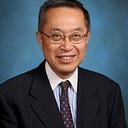Member-only story
The Context of Nei-ye in Daoist Thought
In discussing the distinction between Philosophical Daoism and Religious Daoism, I recently wrote:
While mystical experiences and altered states of consciousness may have existed before Laozi, the Tao Te Ching and the Zhuangzi do not primarily focus on techniques for inducing such states.
A Facebook friend responded with an insightful question:
Where does this leave the quotes I shared from Harold Roth’s Original Tao (Nei-ye) and The Contemplative Foundations of Classical Daoism? He describes the Nei-ye as ‘a manual on the theory and practice of meditation that contains the earliest references to breath control and the earliest discussion of the physiological basis of self-cultivation in the Chinese tradition’ (1991) and ‘perhaps the oldest extant text of Daoism’ (1994).
This raises an important point: How does the Nei-ye fit into the evolution of Daoist thought?
Nei-ye: A Proto-Daoist Text
The Nei-ye (內業), or Inward Training, is not traditionally classified as a Daoist text, nor is its attributed author — thought to be Guanzi (管子) or an anonymous writer within the Guanzi corpus — recognized as a Daoist figure. This is significant because it suggests that the Nei-ye predates Daoism as a distinct school of thought. Instead, it…
